Read the Timeline for Lifeboat development below.
See the timeline in the context of the wider ASR organisation here.
The Airborne Lifeboat timeline is a relatively short period within the Air Sea Rescue lifetime. Conceived in 1941 the Lifeboat played an important part in rescuing ditched crews during the war but by the mid 1950s demand had dropped and what demand there was met by helicopters. Interestingly though many of the retired lifeboats after the war were used as pleasure yachts well into the 1960s.
| Airborne Lifeboats Timeline | ||
|---|---|---|
| 1941 | ||
| April |  | Idea for airborne lifeboat solidifies1941, two years into the war, saw the idea of an Airborne lifeboat put forward. Across the RAF people were applying a great deal of thought to giving ditched crew a greater chance of rescue. ... |
| November | 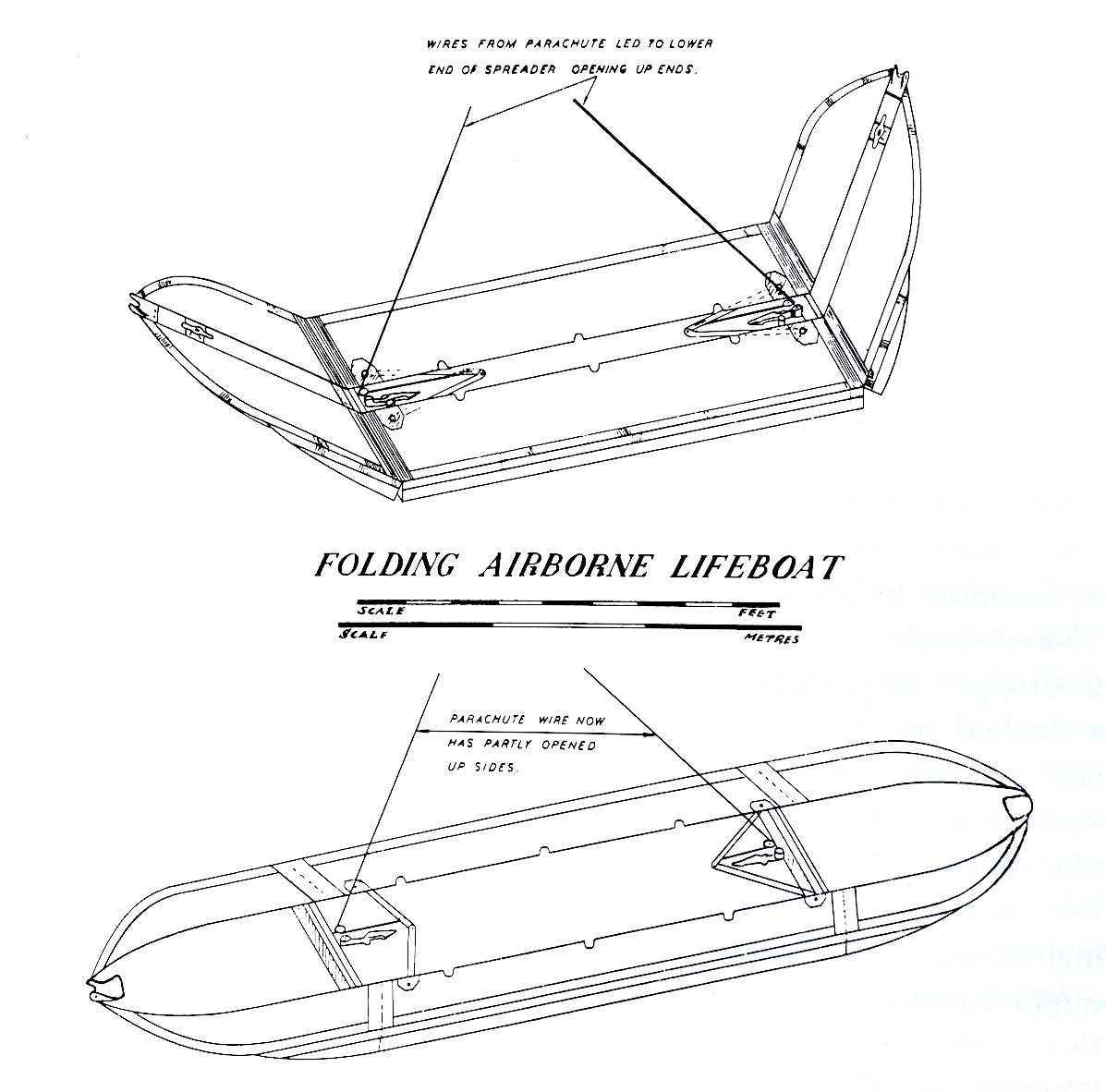 | Uffa Fox engages with Air Ministry in his own inimitable mannerUffa enthusiastically pursued the idea. He experimented with the idea of a folding boat to be carried inside the bomb bay of an aircraft. Uffa writes about this in his book ‘Joys of Life’. He ... |
| 1942 | ||
| January | 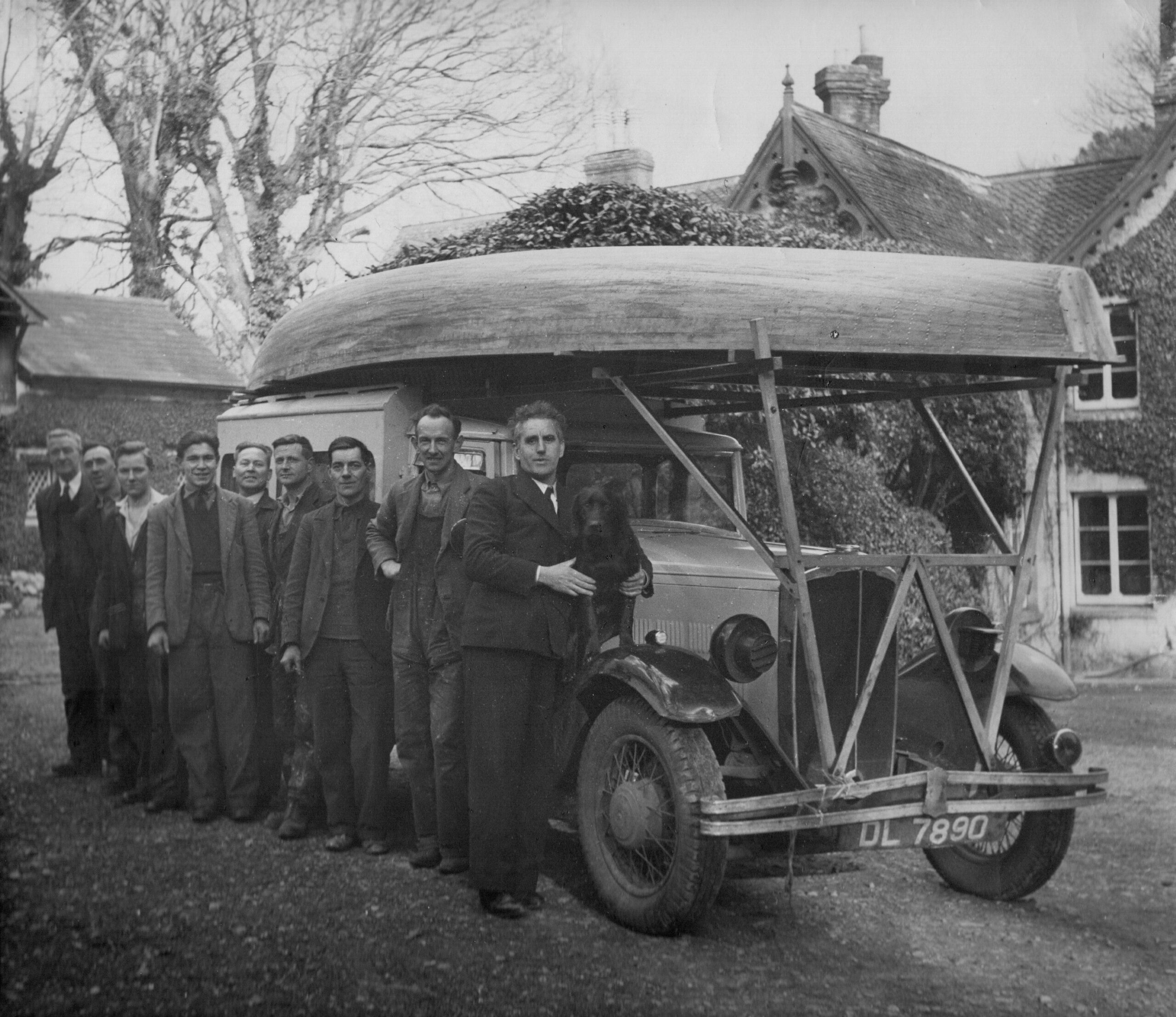 | Uffa Fox 20′ lifeboat proposal refines requirementsPhoto from the Uffa Fox Archive During January 1942 Uffa Fox discusses proposals for a lifeboat twenty feet long with Director of Technical Services, Deputy Director Air Sea Rescue (Group Captain Waring, who had also ... |
| September |  | 23′ Mark I Design confirmedThe development of the Mark I during Spring 1942 led to preliminary tests in August. The following is a summary of key changes from the 20′ prototype tested earlier in the year : Adoption ... |
| October | Decision to replace Hudsons with Warwicks for ASRBy October 1942, before the ASR Hudson had even become operational, it had already been decided to replace them with Warwicks. This meant meant adapting the lifeboat to fit the new aircraft. The changes were ... | |
| 1943 | ||
| January | 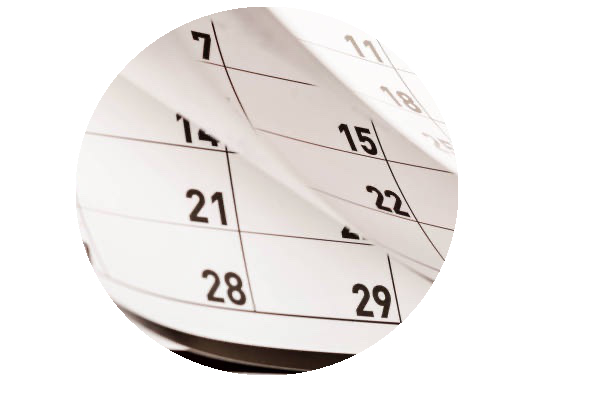 | Development drags onAlthough the hull and concept were now agreed development was taking a long time due to finalise design and supply of all of the equipment and gear required, partly because the lifeboat was competing with ... |
| February |  | 279 Squadron Hudsons operational with Mark INo 279 Squadron’s Hudsons eventually became operational with lifeboats in January 1943. The lifeboats were well provided with signalling aids plus sufficient food, drink and comforts, including waterproof suits and first aid kit, to cover ... |
 | Training – 279’s First lifeboat dropThere were many teething troubles with the lifeboat, its gear and understanding of to use them. The ground and aircraft crews needed training and practice in their use and deployment. A significant ... | |
| May |  | XFirst Operational drop, 279 Squadron5th May 1943 – Three Hudsons from 279 Squadron attended the ditched crew of a Halifax (102 Squadron) returning from a raid on Germany. Their position was 85 miles East of Spurn Head. One ... |
| October | 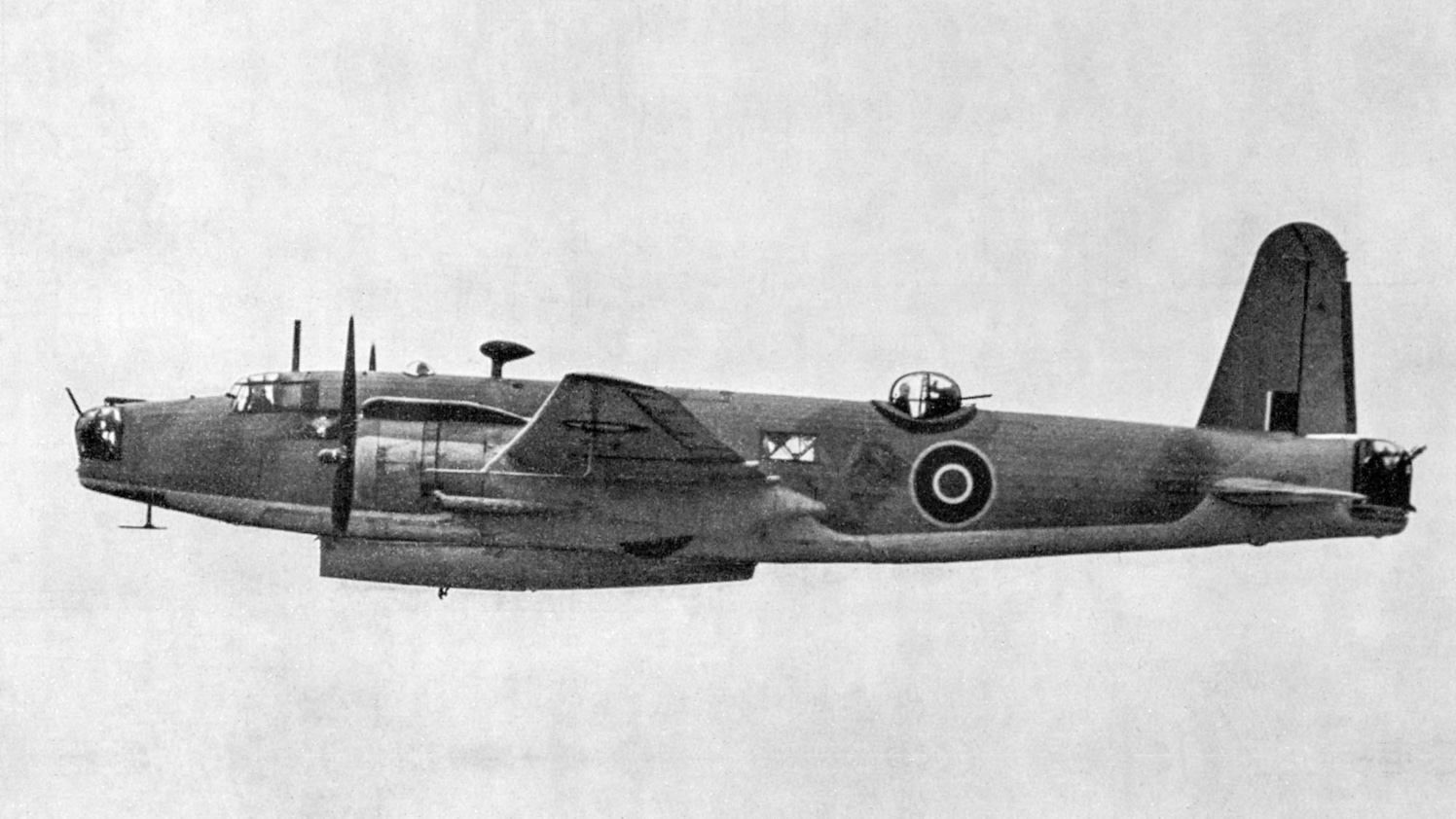 | Mark IA and Warwicks operationalThe first Warwicks for Air Sea Rescue service were delivered to 280 Squadron. They were then supplied to 276, 278, 281 and 282 Squadrons in time for D-Day. The Warwick greatly improved the ... |
| December |  | Mark II Designs proposed by many yardsUffa Fox had started work on his ideas for other versions of an Airborne Lifeboat immediately the Mark I was designed and probably before. The Air Ministry invited tenders from many boatbuilding companies for new ... |
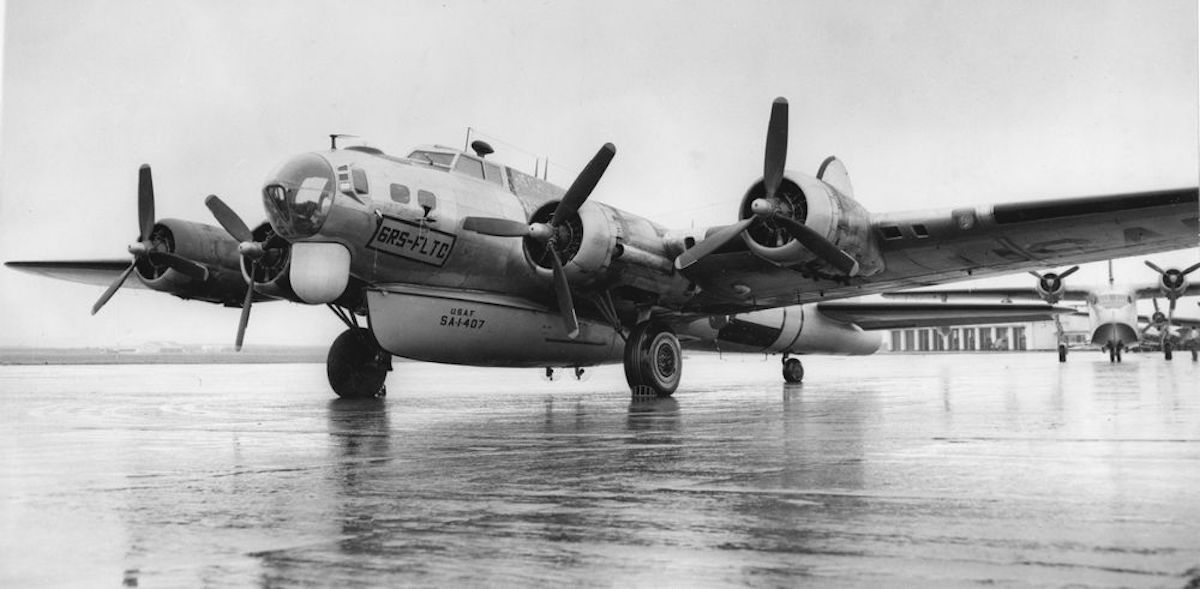 | Mark I trialled on American planesThe USAAF were interested in the Airborne Lifeboat and some early trials were made with the Mark I, supported by Uffa Fox. Several lifeboats were sent to USA from which the American A-1 lifeboat was ... | |
| 1944 | ||
| May | 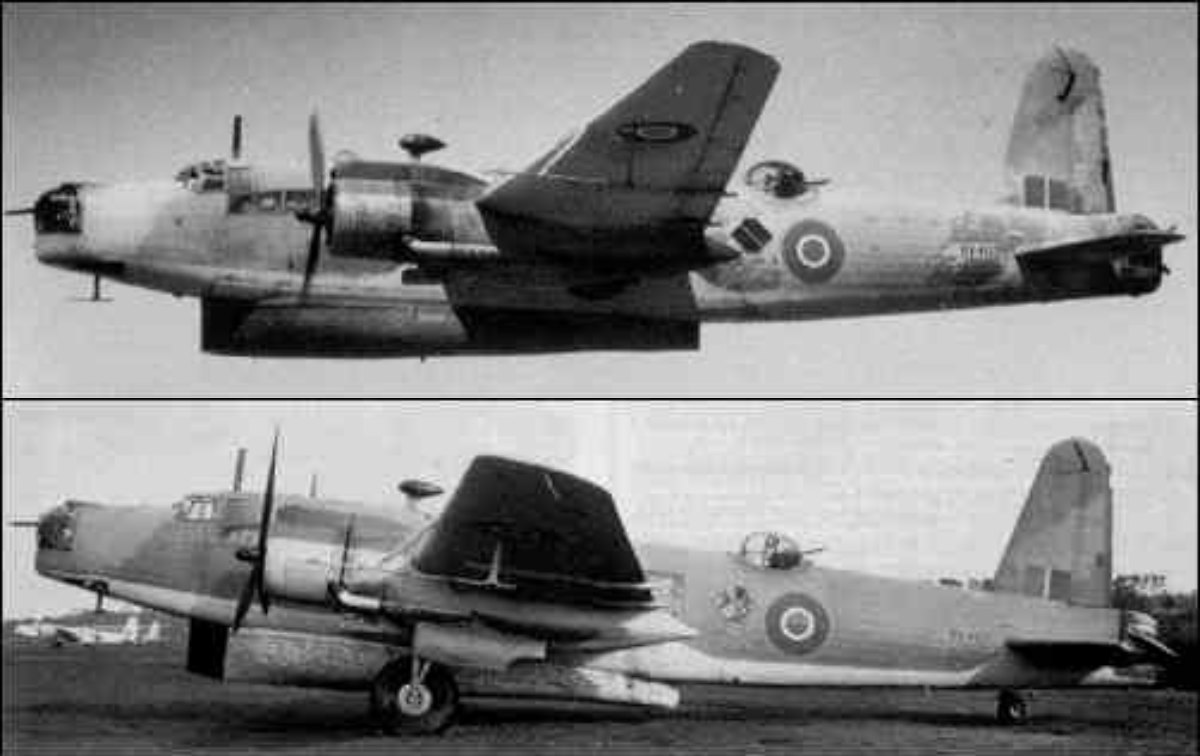 | Mark II built for Warwicks and later Mark IIa for LancastersThe Mark II Airborne Lifeboat was six feet longer than the Mark I, taking advantage of the larger Warwick. Although fundamentally the same conceptually it had larger carrying capacity and incorporated detail improvements from experience with ... |
| October |  | The A-1 lifeboat has been fitted to 14 American aircraft.The USAAF created their own design with input from the RAF and Uffa. The first operational design was the A-1 and it was followed up by a series of bigger designs, mainly after the war. ... |
Alternative ‘Mark II’ designs in moulded plywood evaluatedVosper and Merrom both designed and trialled moulded ply hulls during 1944. The Merron boat trials were extensive and initially favourable. Ten boats were ordered but the design was dropped after trials in 1945. | ||
| 1945 | ||
| January | 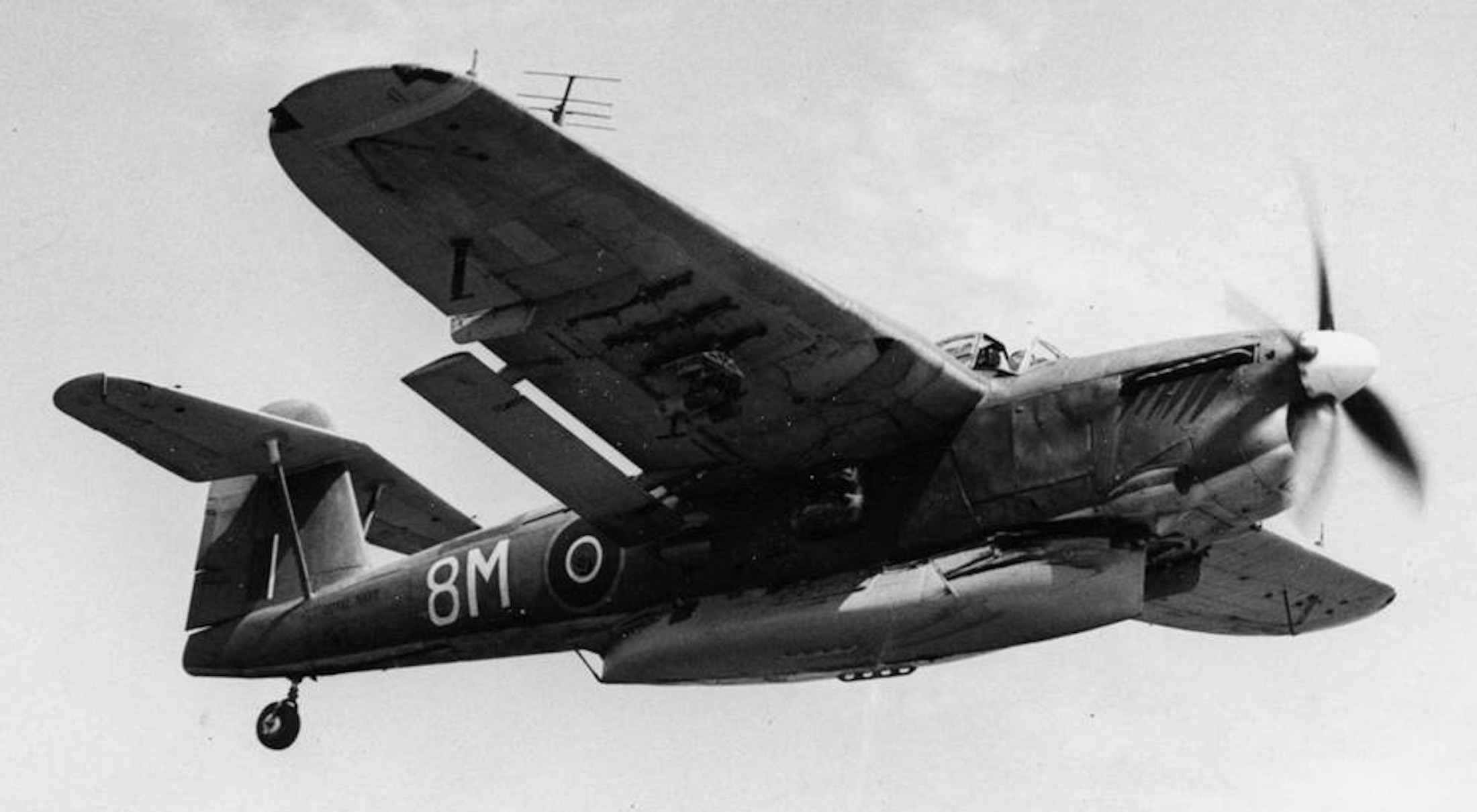 | Mark RN-1. The Fleet Air Arm experiment with an 18′ lifeboat on a Fairey Aviation BarracudaOne of a number of designs eminating from Uffa’s yard after the Mark I design was complete. Most were not taken forward but the Royal Navy did have a boat, RN-1, to a 17’6″ design ... |
| 1948 | ||
| December | 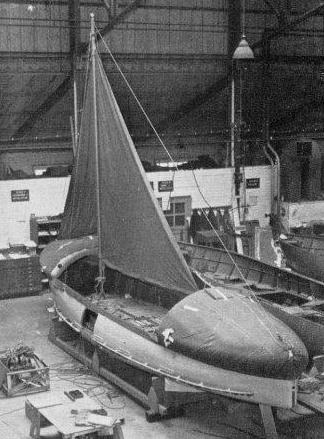 | Mark III design developed by Saunders Roe, BeaumarisThe wooden Mark I and Mark II hulls suffered in mediterranean and tropical climates so an alloy hull was designed. The Mark III was to be fitted to Shackletons, much larger than the Warwick which ... |
| 1960 | ||
| January | 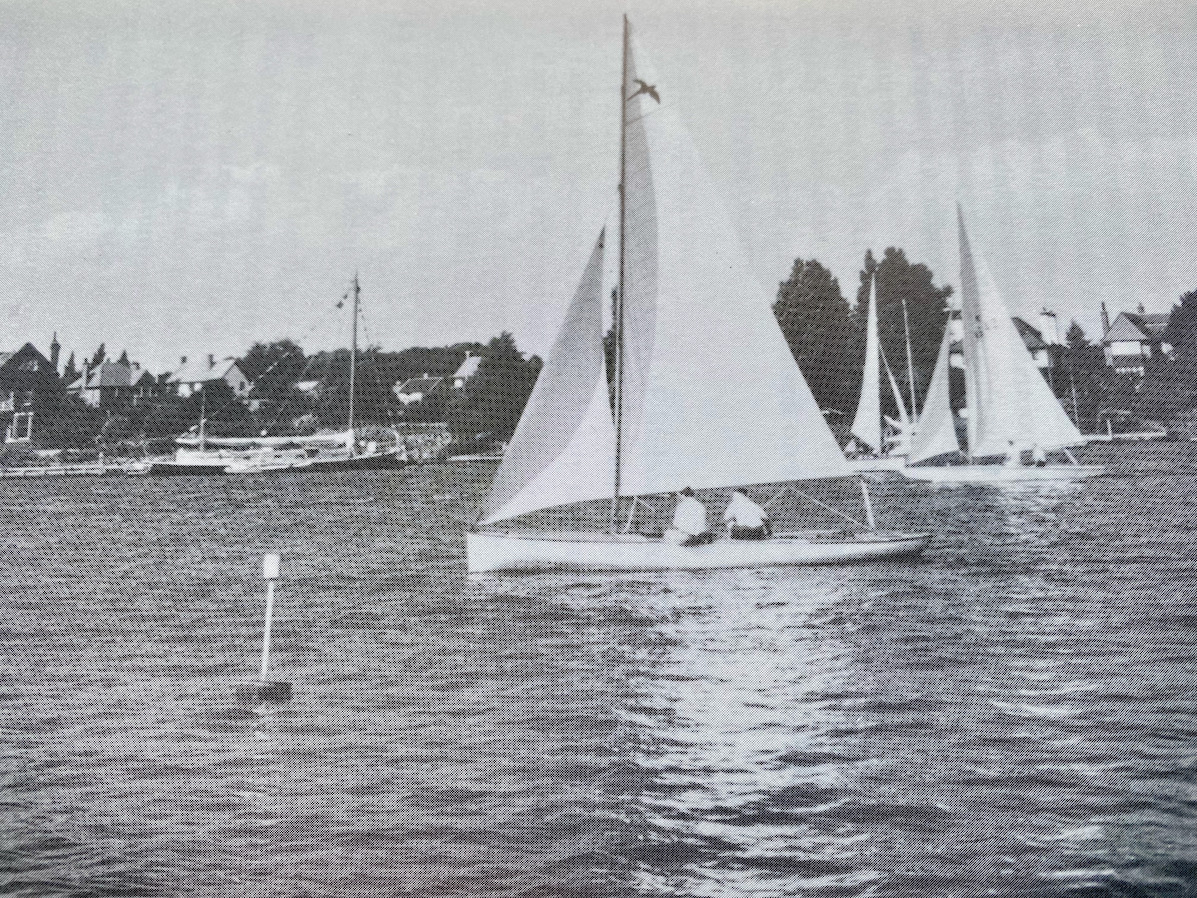 | Lifeboats live on as affordable yachtsIn the years after the end of the war surviving lifeboats were disposed of by the Air Sea Rescue service. Many were converted to pleasure use with the Royal Air Force Sailing Association in ... |